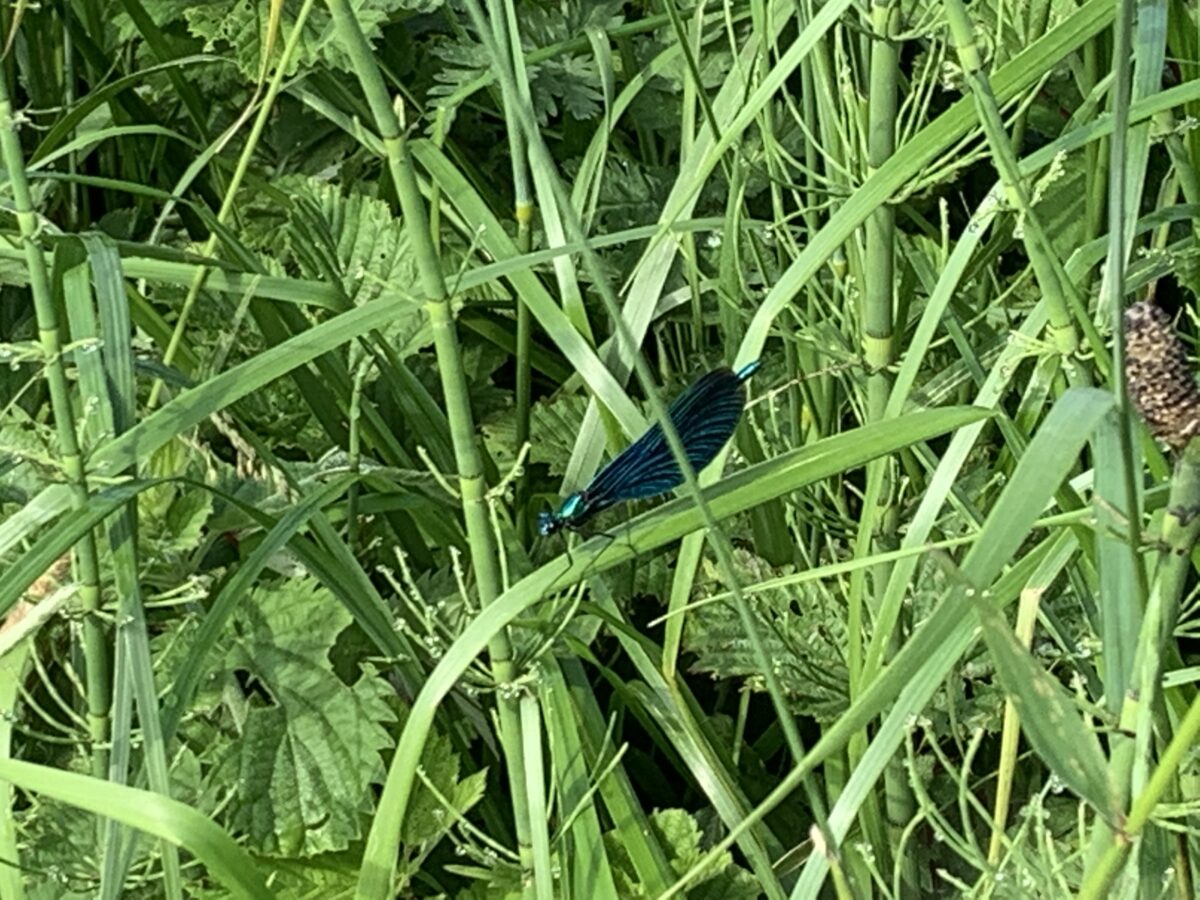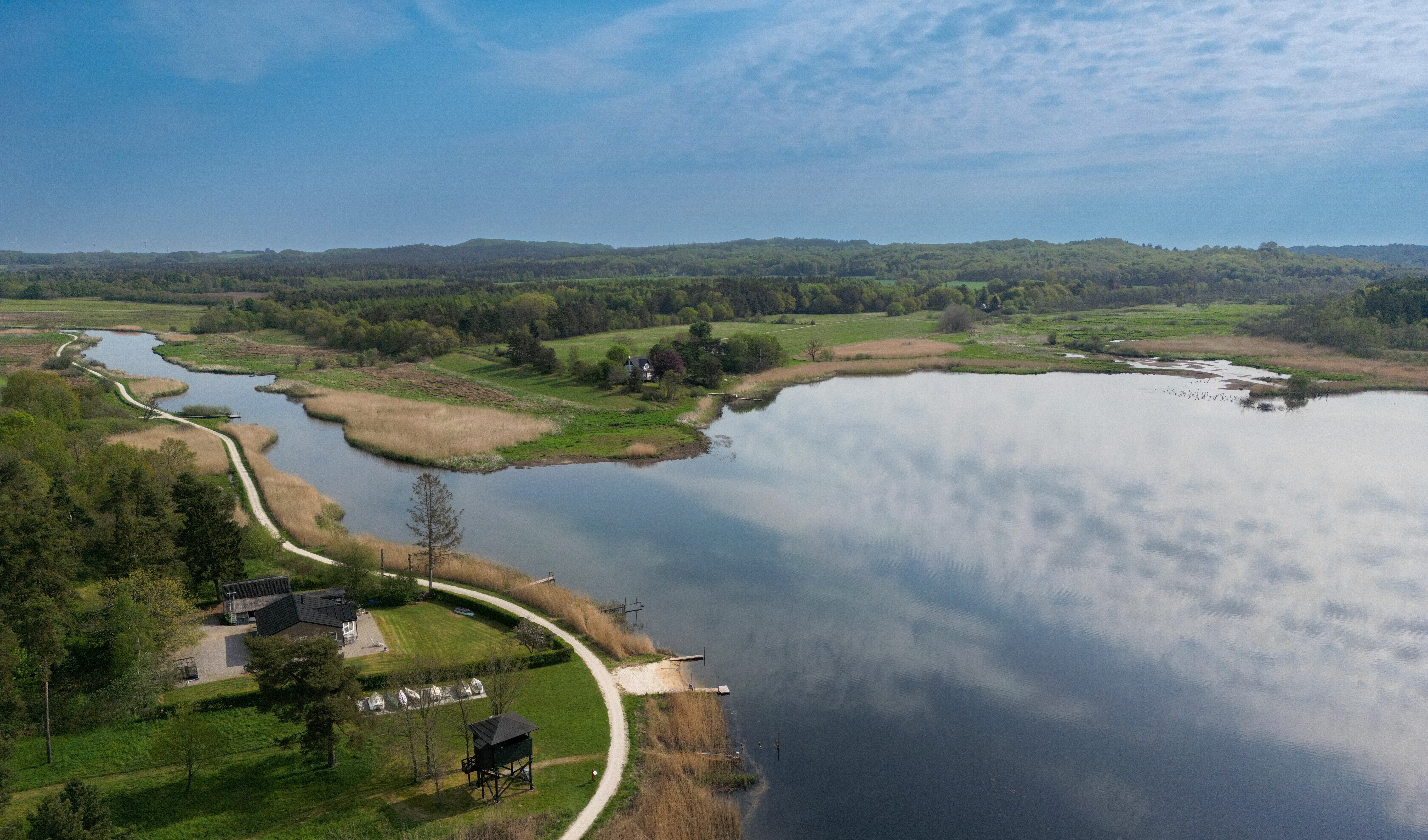
The glacial landscape of Gudenådalen
When the ice began to retreat from the Jutland ridge during the last ice age around 18,000 years ago, the meltwater no longer flowed westward across the moorlands of Central Jutland but found its way northward through the Gudenådalen valley. In other words, the Gudenådalen valley was created by enormous meltwater rivers that raged northwards to find their way to the sea.
Initially, the road to Randers Fjord and Kattegat was blocked by ice, so the meltwater found its way west and flowed into Hjarbæk Fjord. When Kattegat became ice-free, Gudenåen found its final course eastward through Randers Fjord into Kattegat, and Gudenådalen is Denmark’s longest meltwater valley.
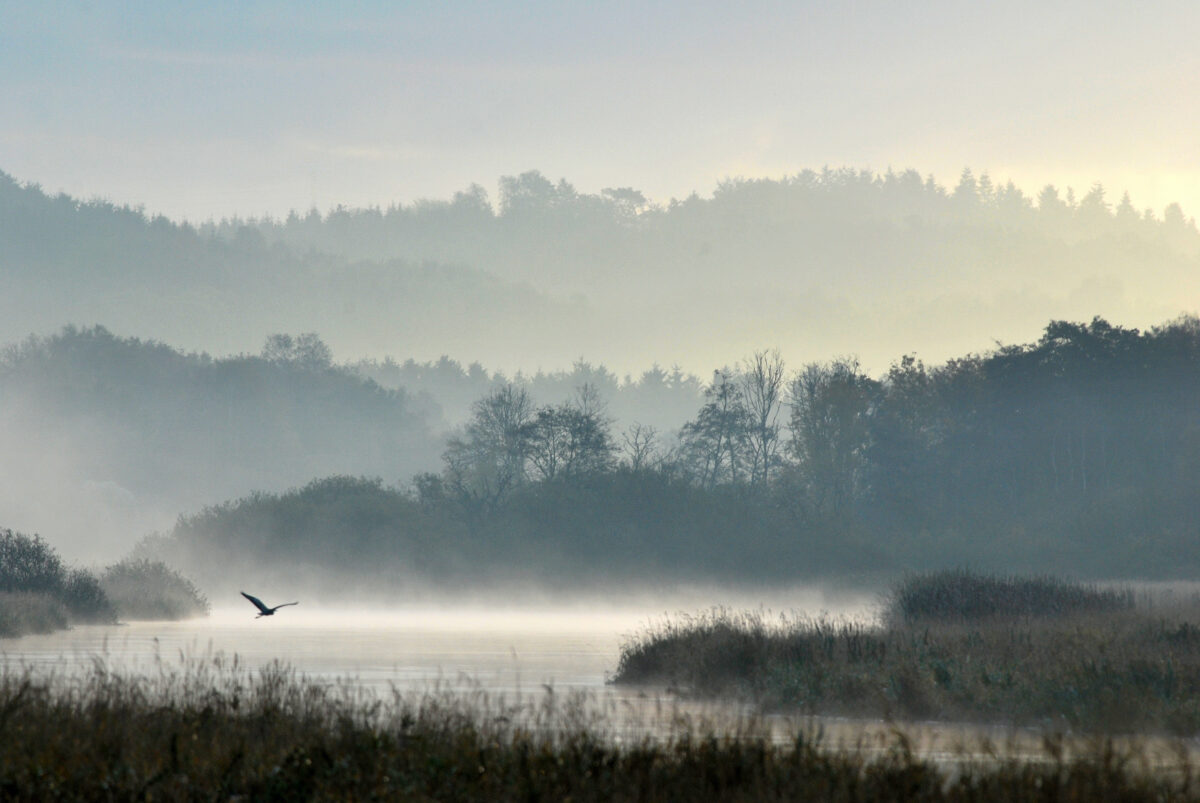
The meltwater rivers eroded the sides of the river valley and deposited at the bottom, and the terraces found in Gudenådalen on both sides of Gudenåen reflect earlier phases of melting. The terraces are the former river bottoms that Gudenåen has cut deeper and deeper into as the ice melted away and new drainage opportunities arose. They can be very large and lie 20-30 meters above the current Gudenå.
The terraces can be seen in the valley sides between Silkeborg and Svostrup, south of Kongensbro, north of Tange Sø, where you can see traces of dead ice in addition to several terraces, and between Bjerringbro and Langå, where the railway lies on the youngest terrace, and between Langå and Randers, where Nørreåen joins the large drainage canal system. South of Randers there are also traces of the Stone Age sea, which after the Ice Age penetrated all the way to Langå and created the flat meadows we see today. Read more here.
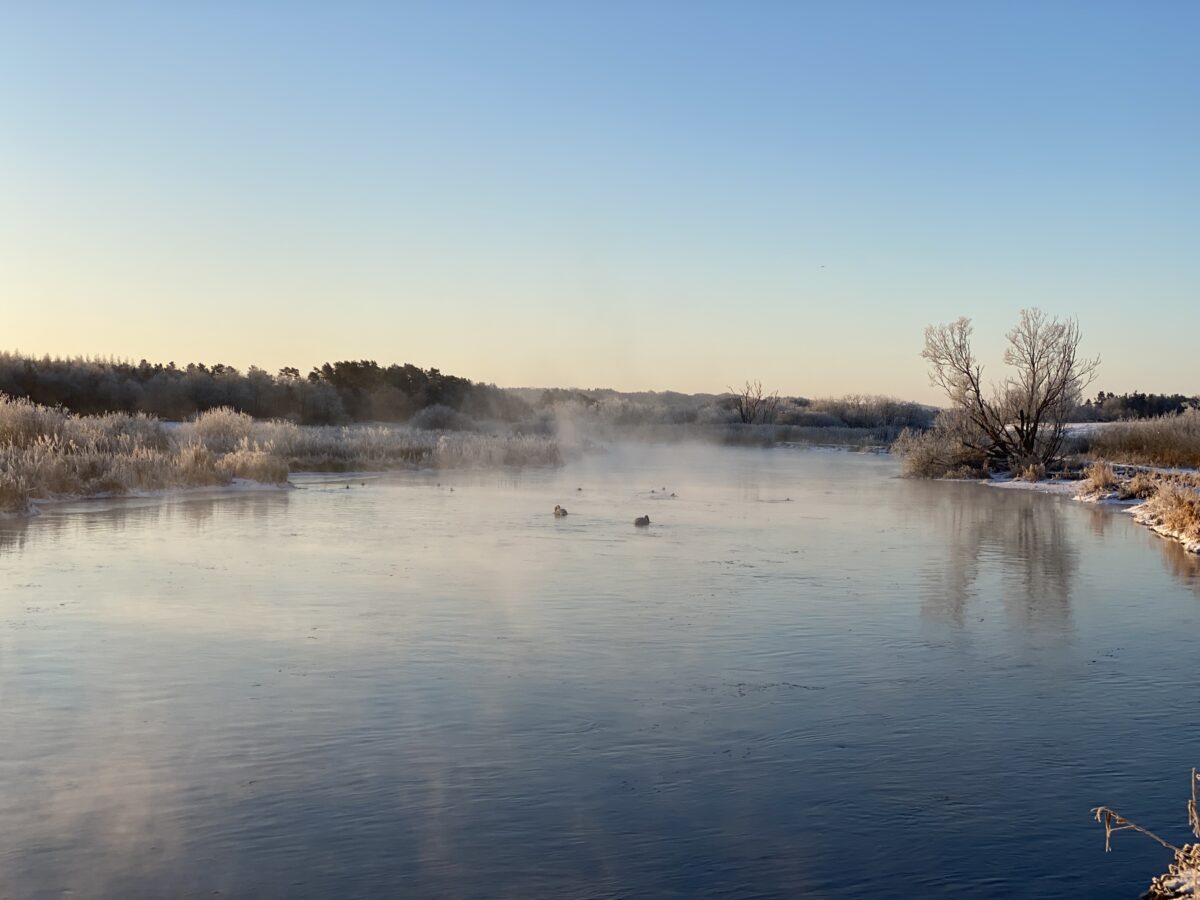
Flora and fauna
Gudenåen is home to more than 80 plant species, including 44 aquatic plant species.
Aquatic plants include water lily, frogbit and several species of water saxifrage. Along the edge, reeds, downy moor grass, reed canary grass and sweet grass dominate. Other plant species include yellow iris, cattail, calamus – an ancient medicinal plant with a strong aromatic smell – and the two poisonous plants bittersweet nightshade and poison ivy. Several of the plant species are included on the Danish gold list of species in decline.
A large part of the Gudenå river delta has been drained, but on the stretch between Randers city and Fladbro, the remains of the delta can still be experienced. There are tributaries and marshy areas overgrown with reed beds, willows and aquatic plants.
If you see the tall giant hogweed, please report it to the municipality (see contact box on the right). Giant hogweed is an invasive species that a lot is being done to combat through action plans.
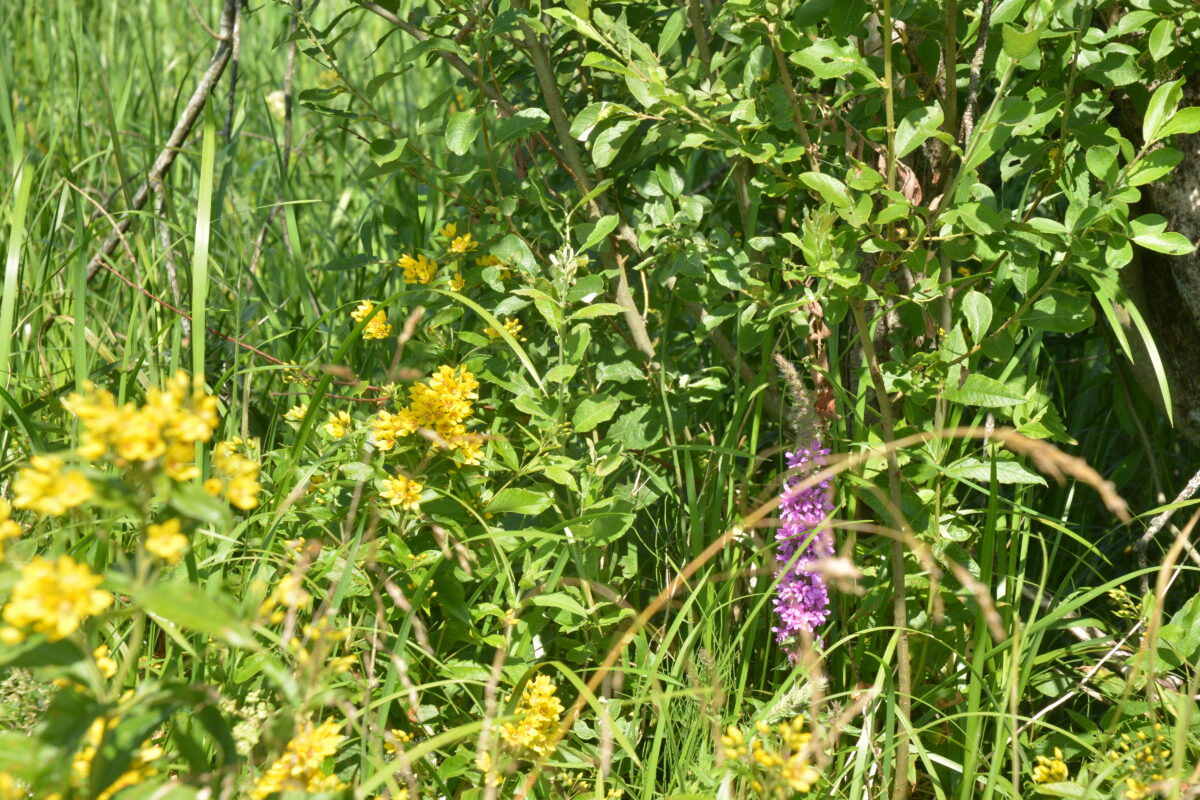
Fish life
The water has a good population of salmon and trout, but unfortunately, there is also a good population of the invasive mussel. It is not native to Denmark but originates from the Black Sea. While it’s true that the zebra mussel can help clean the water of algae, the big disadvantage of the species is that it can be in such dense populations that it can outcompete native animals and plants. Therefore, it is considered a major and growing problem in many parts of Denmark.
Gudenåen’s fish population is very species-rich, including salmon (release fish), trout (lake, brook and sea trout), eel, grayling, bream, bream, roach, pike, perch, lamprey (brook, river and sea lamprey), smelt, etc.
Several of Gudenåen’s fish species are included in Annex II of the Habitats Directive and on the Danish yellow and red lists of species that are in decline, disappeared, threatened, vulnerable or rare.
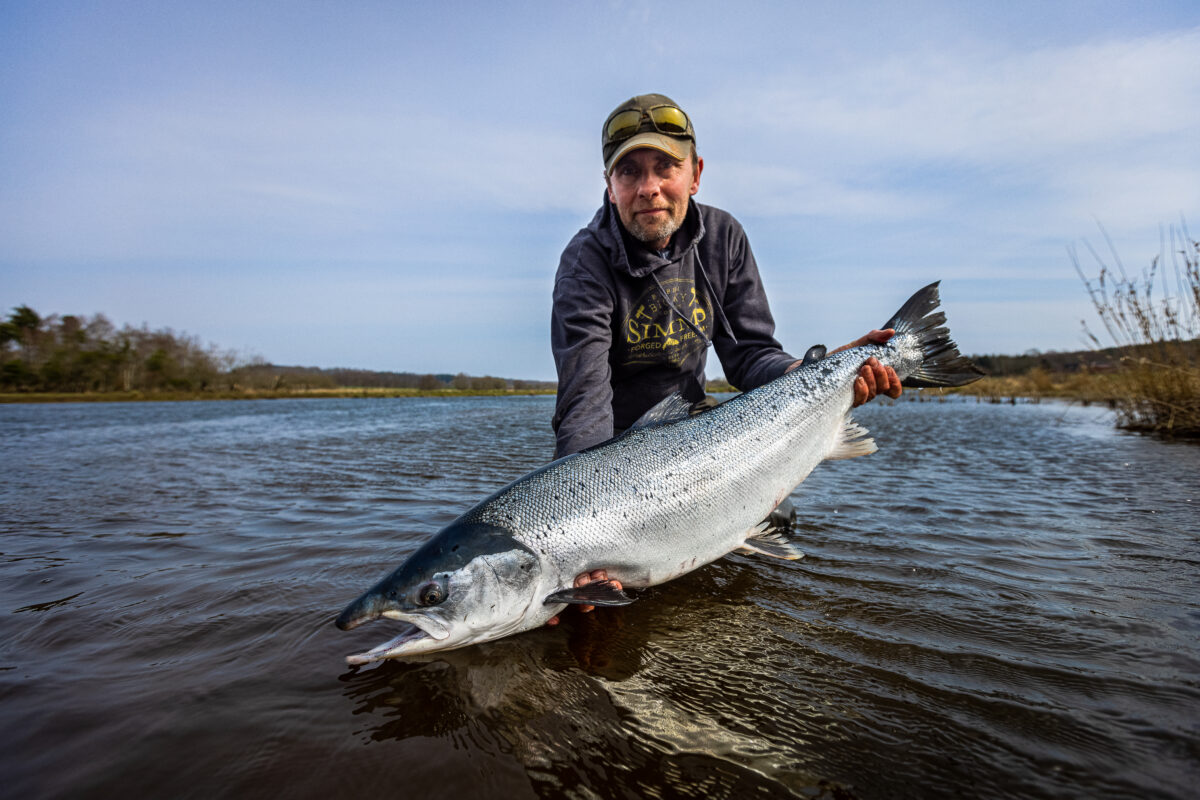
Birds, animals and insects
As for birds, there is a good chance of seeing herons, grebes, coots, ducks and mute swans. In the pipes along the edge, reed warbler, nightingale and reed bunting sing during the summer. If you’re lucky, you might spot kingfishers soaring like blue arrows over the surface of the water and maybe even the marsh harrier soaring on raised wings above the reedbed.
You’ll also be lucky to see otter, a species that was very rare in Denmark in the 1980s, but now thrives in most of the country and not least along the Gudenåen river.
Among the insects, we must highlight the beautiful water nymph and the more rare green dragonfly, veil wings, which live nowhere else in Denmark than at Gudenåengene south of Randers.
In the forests east of Tange Lake there is a permanent population of red deer.
